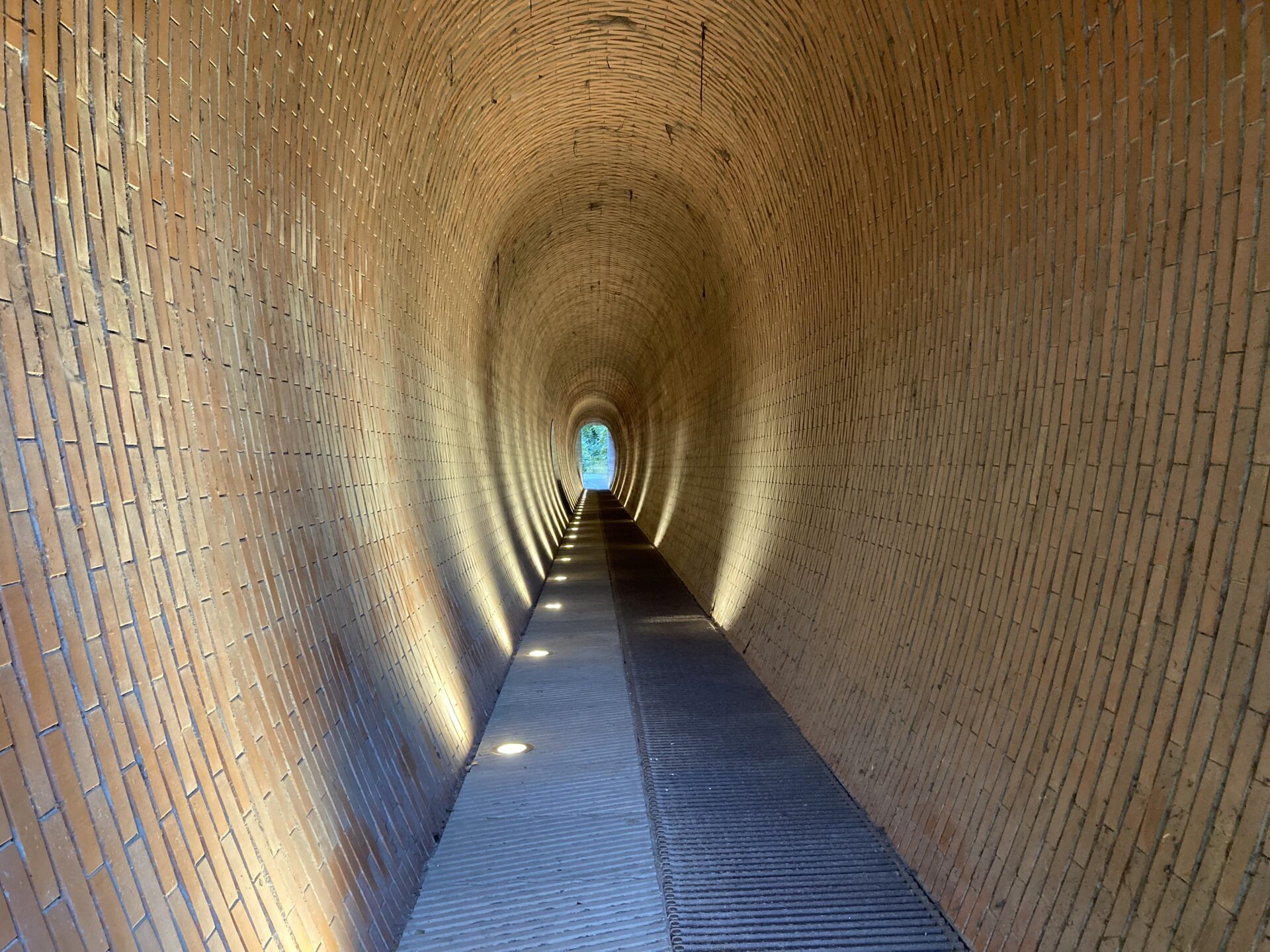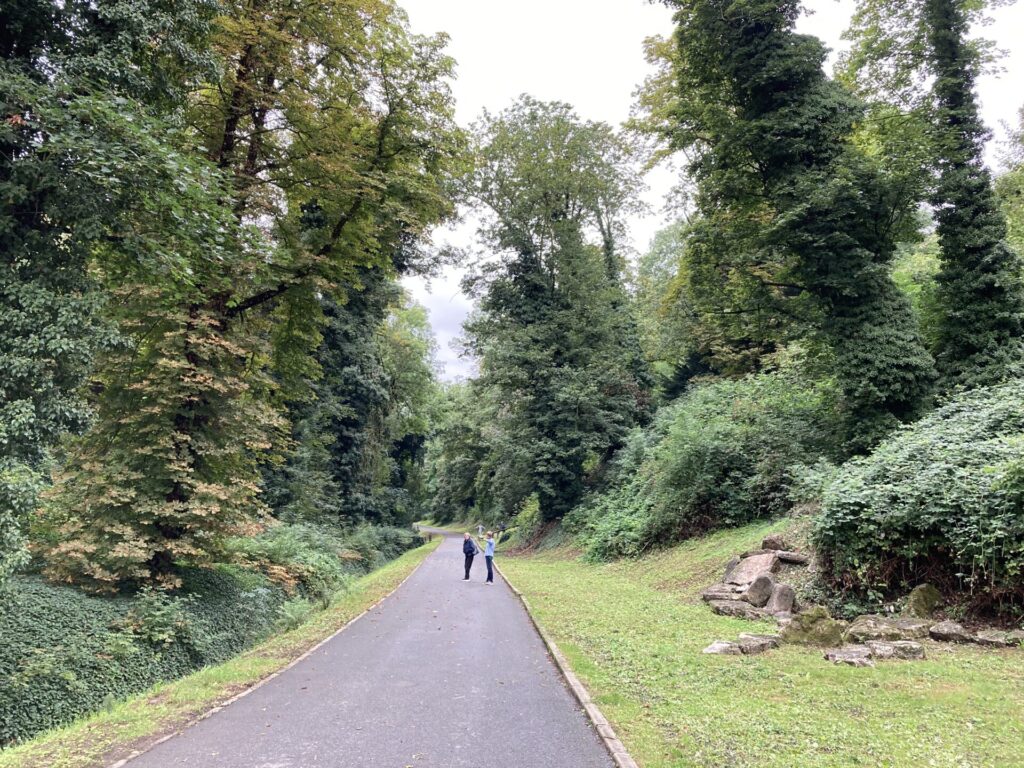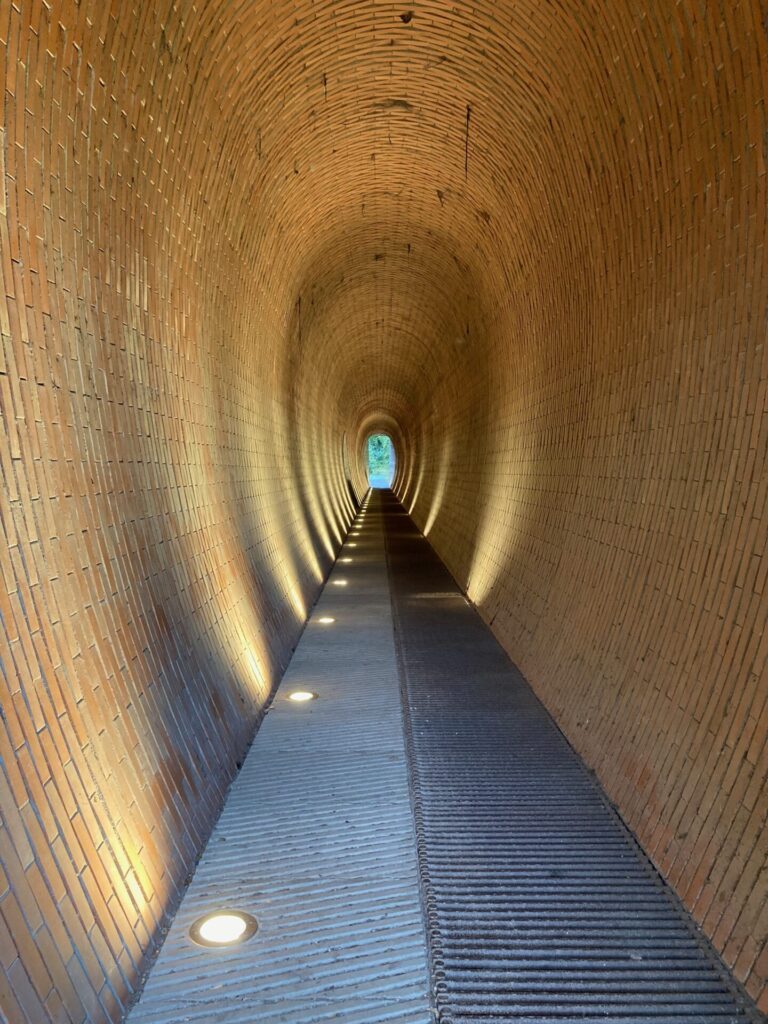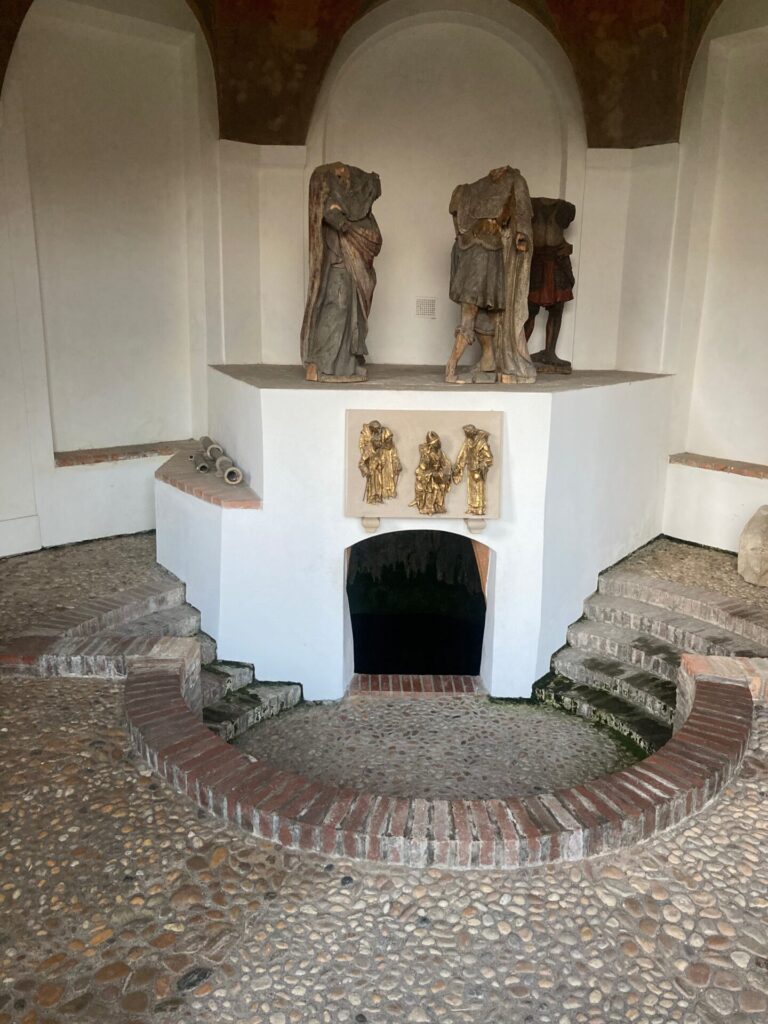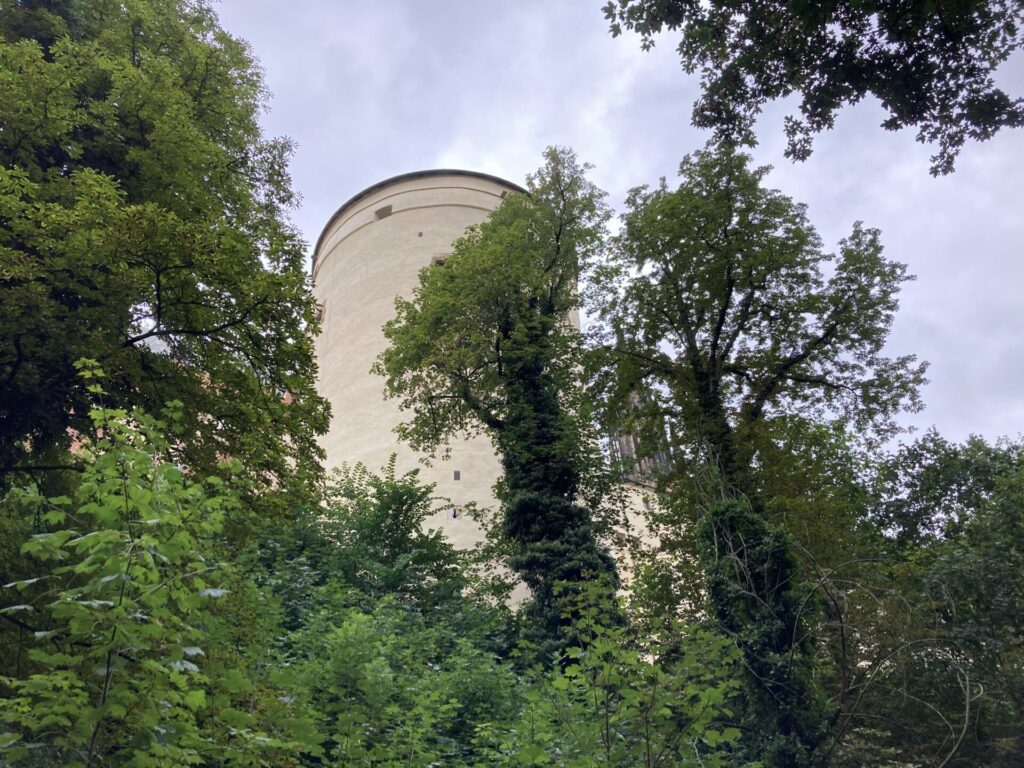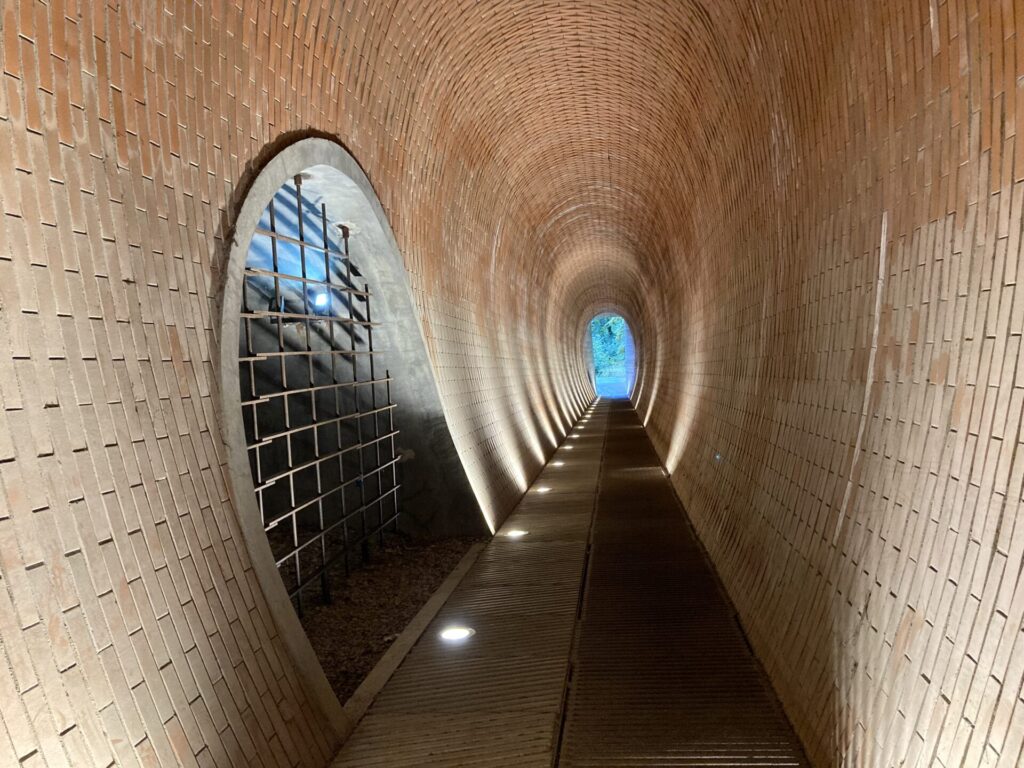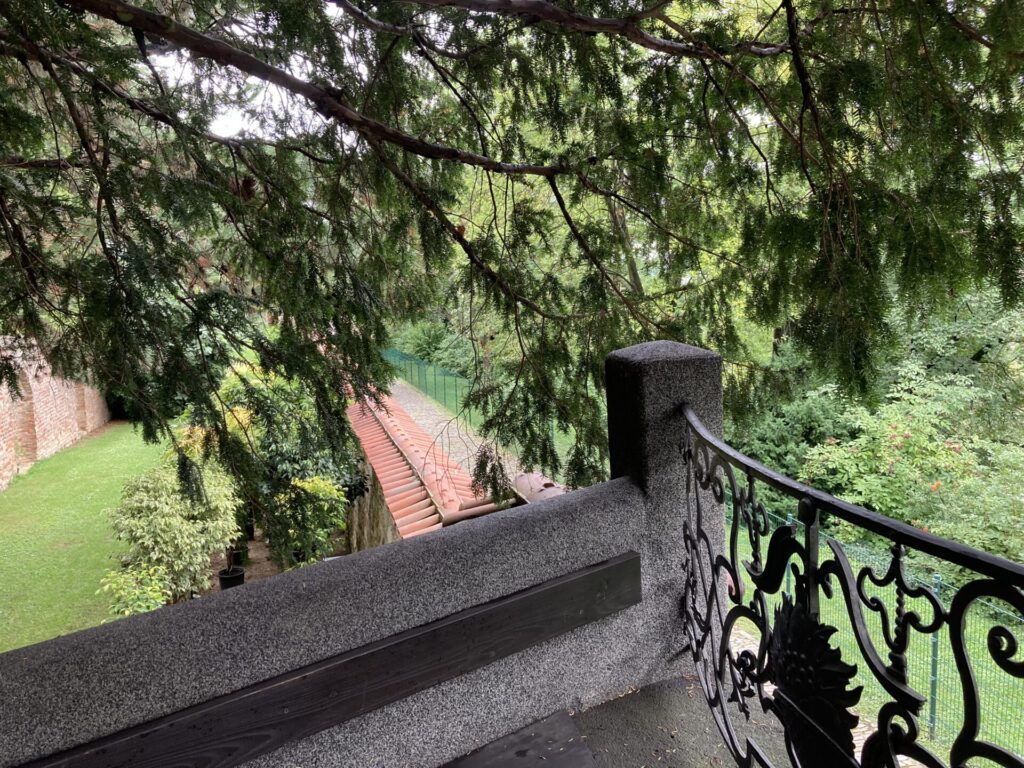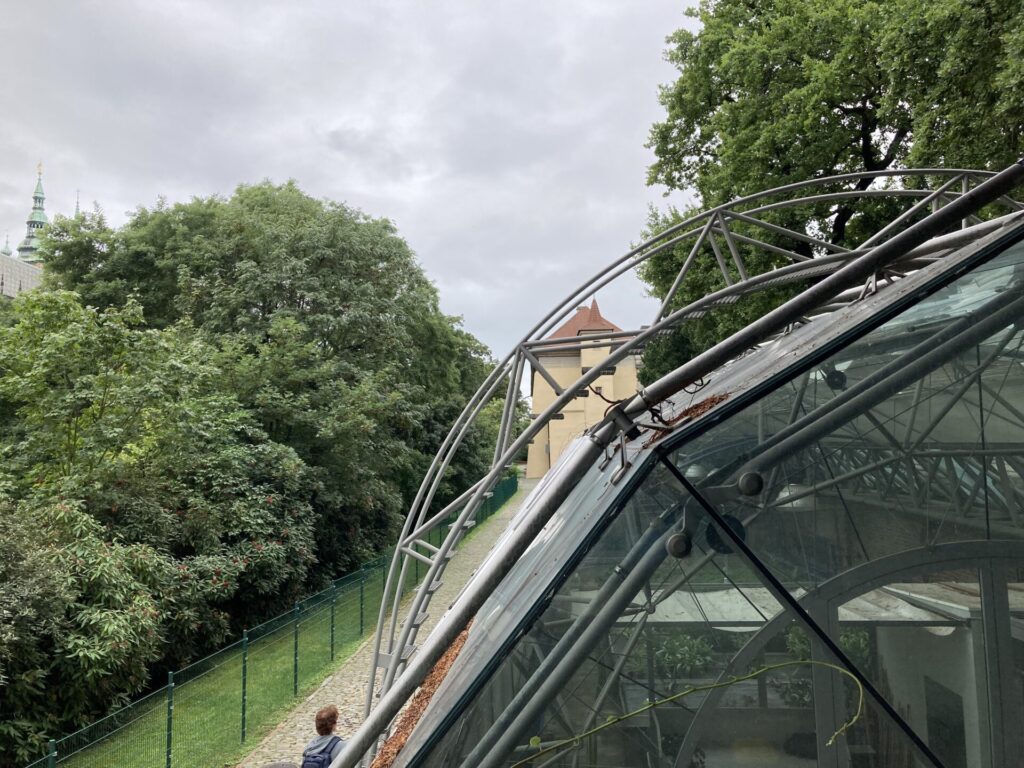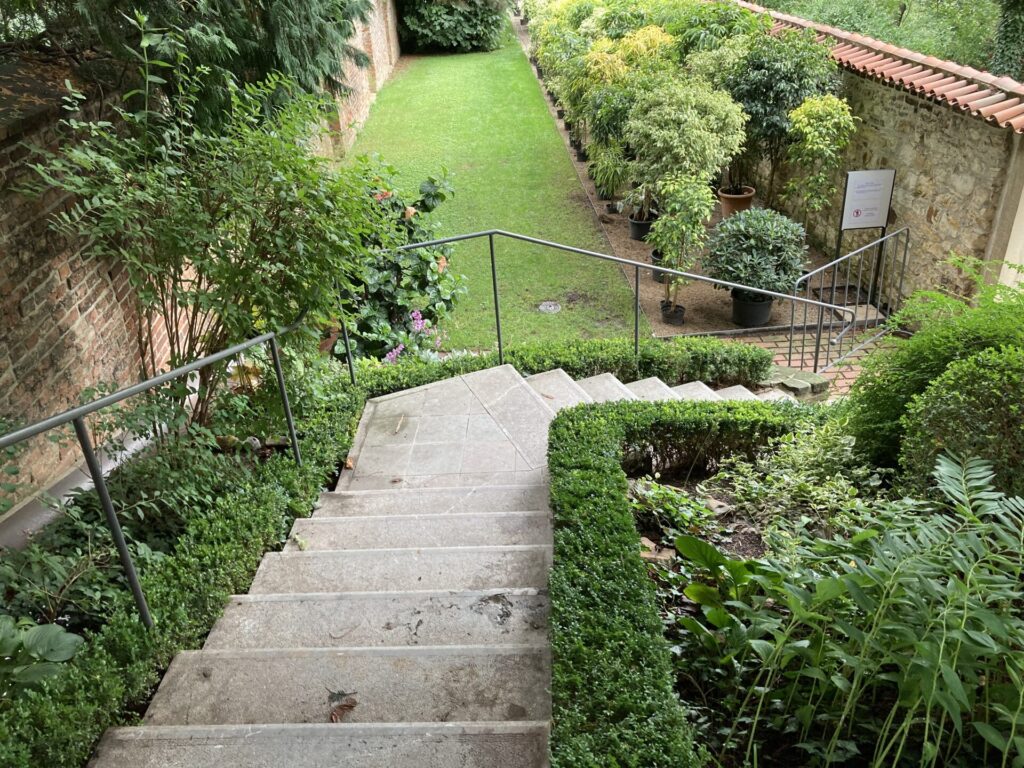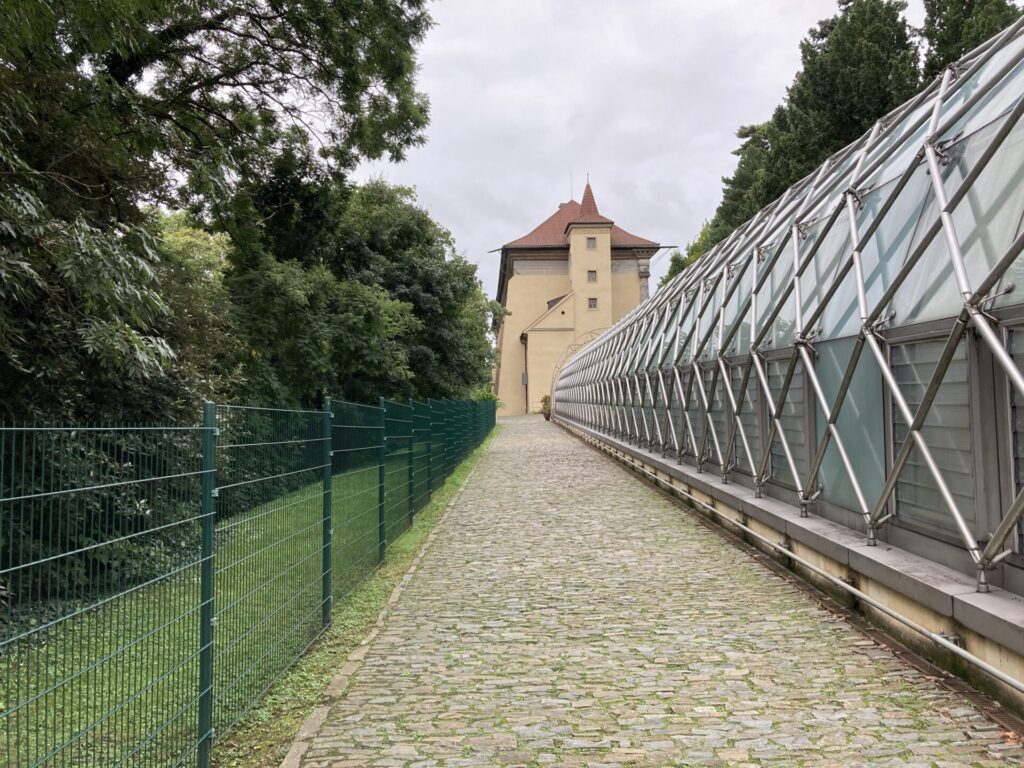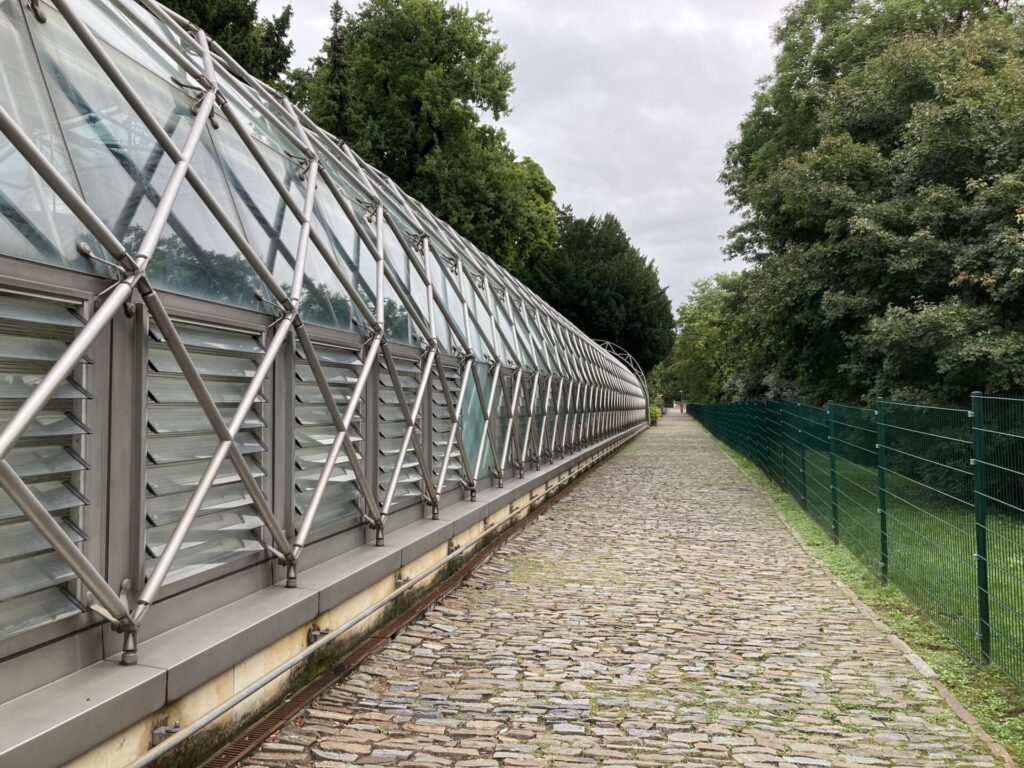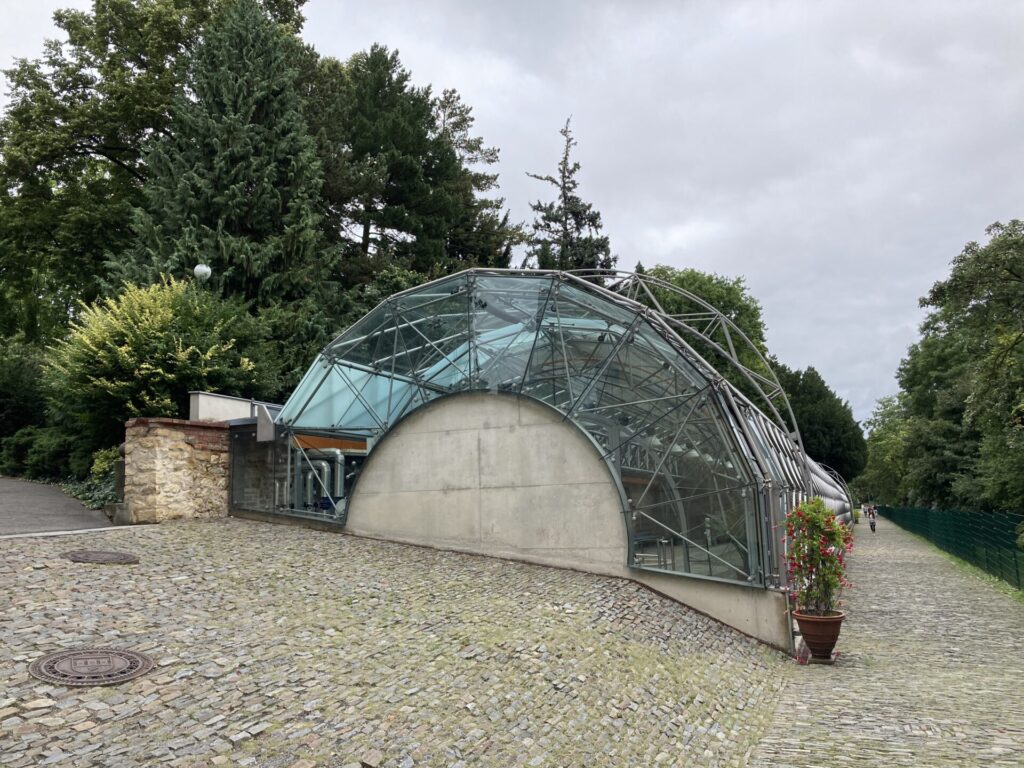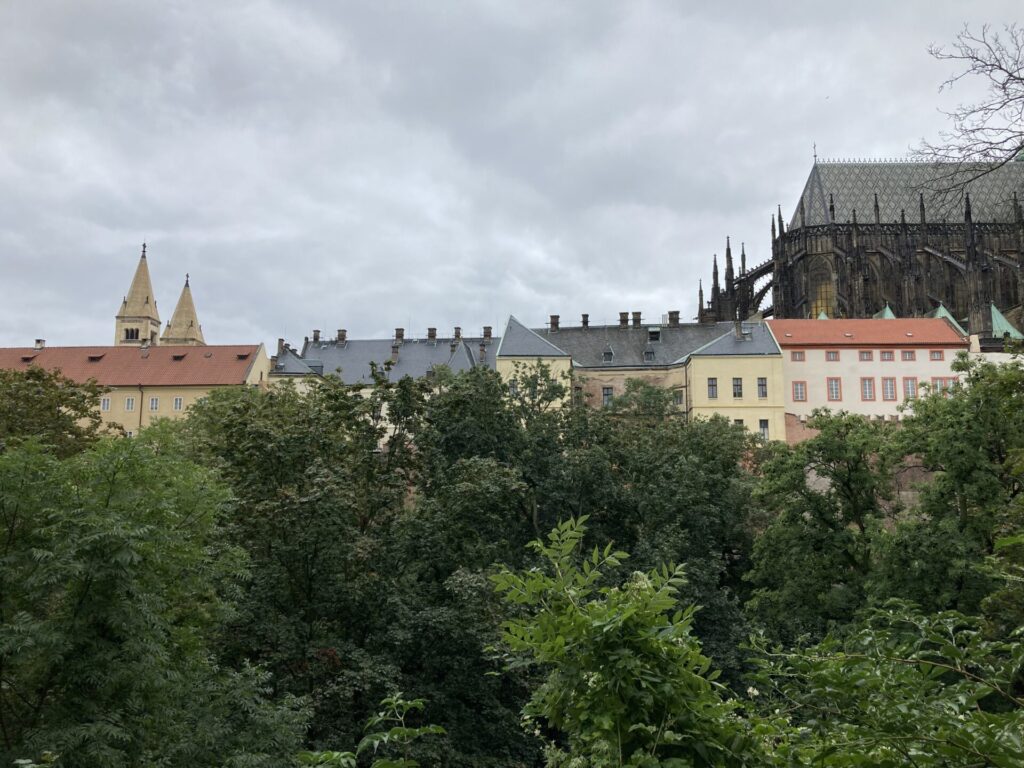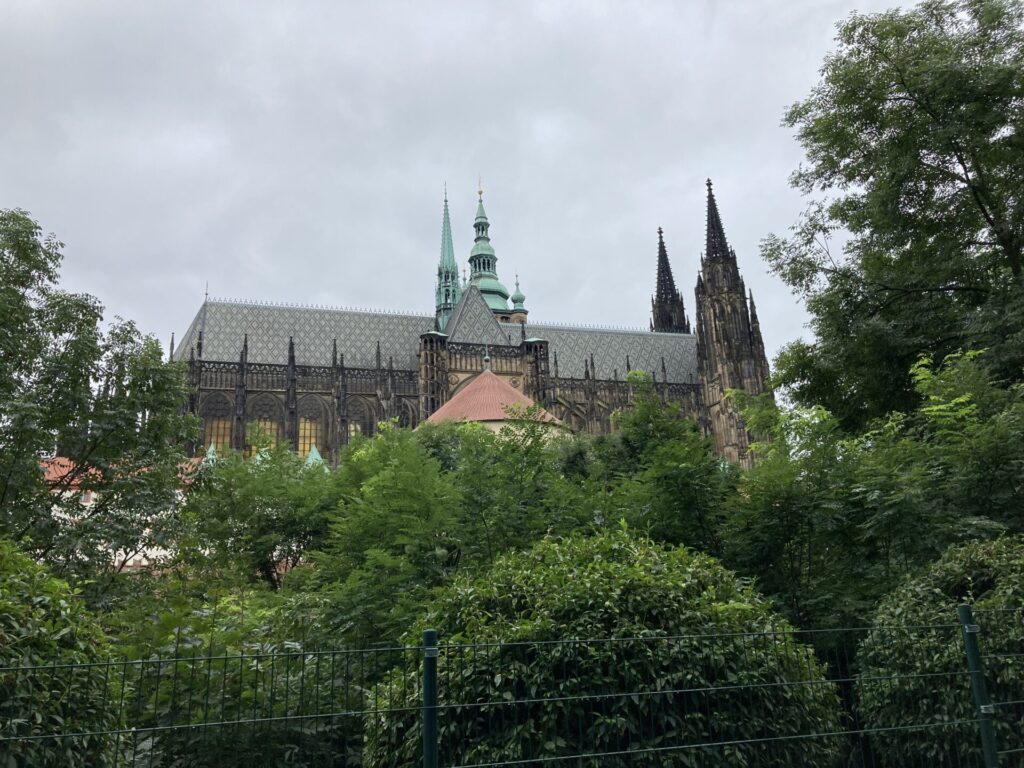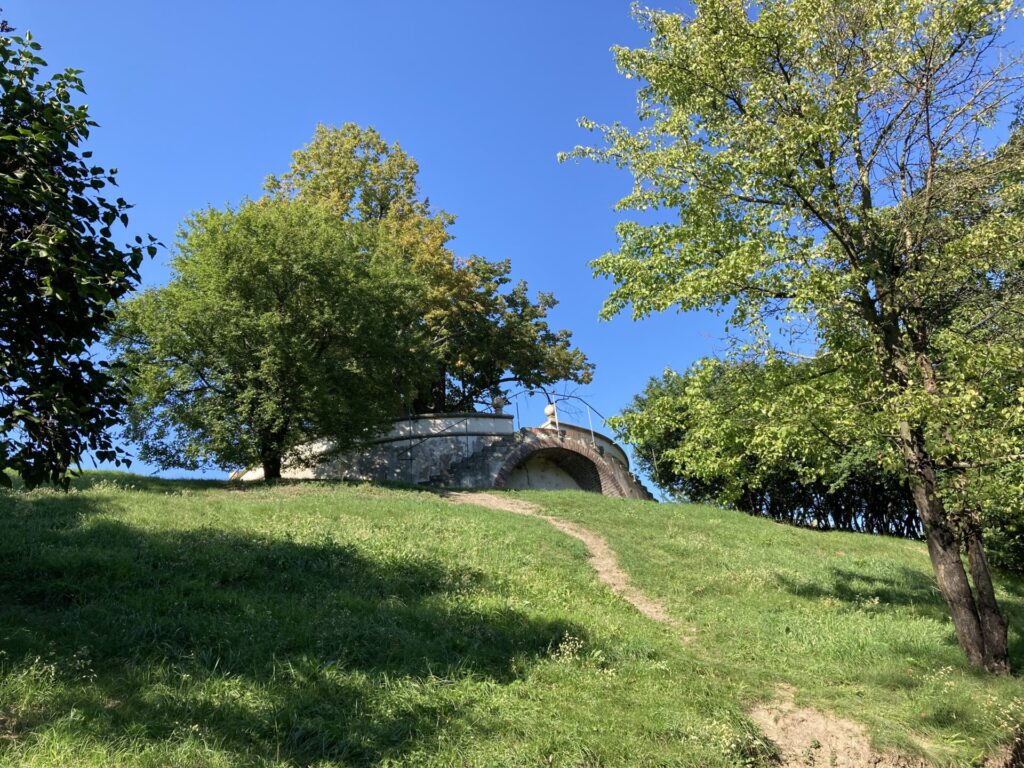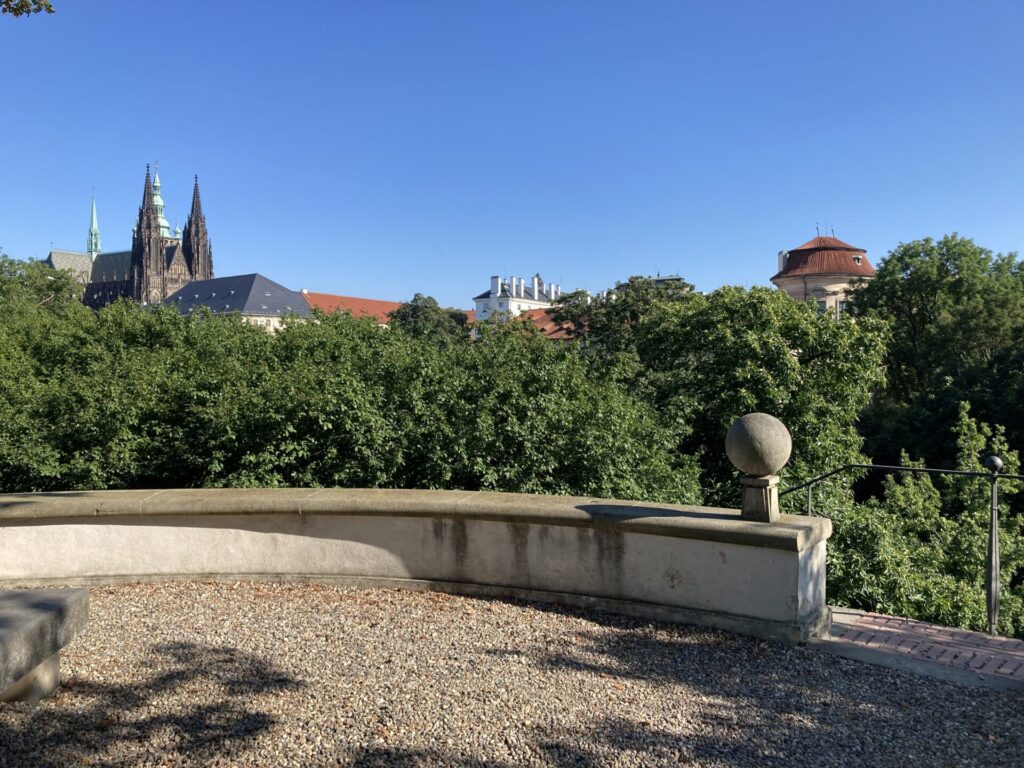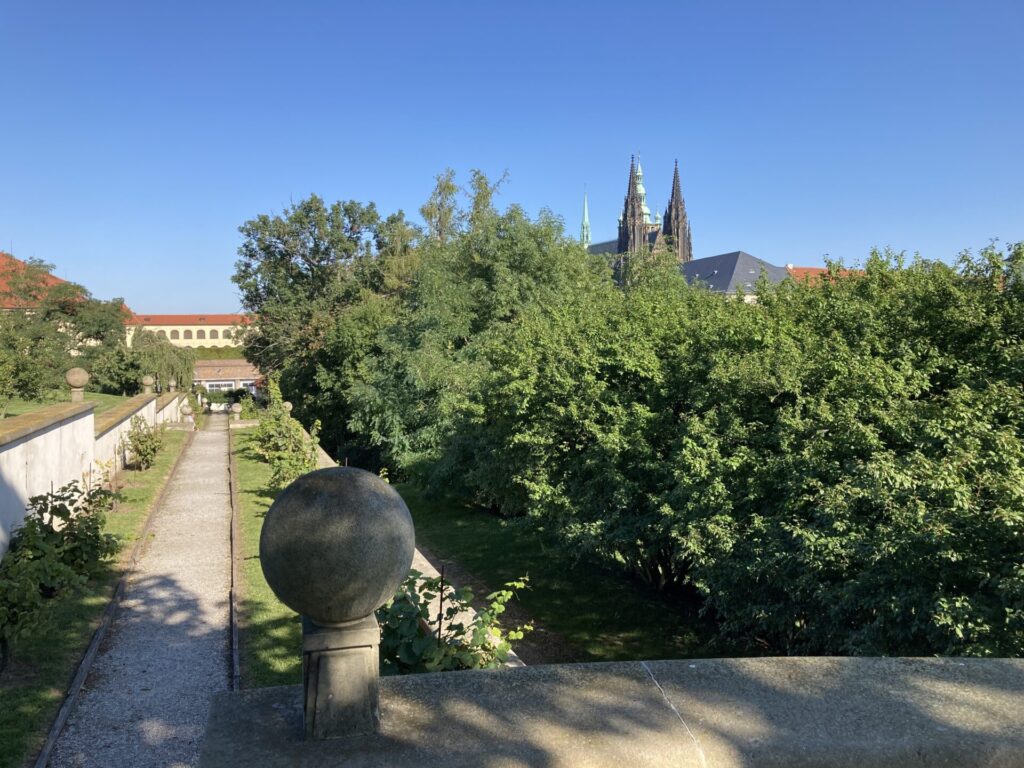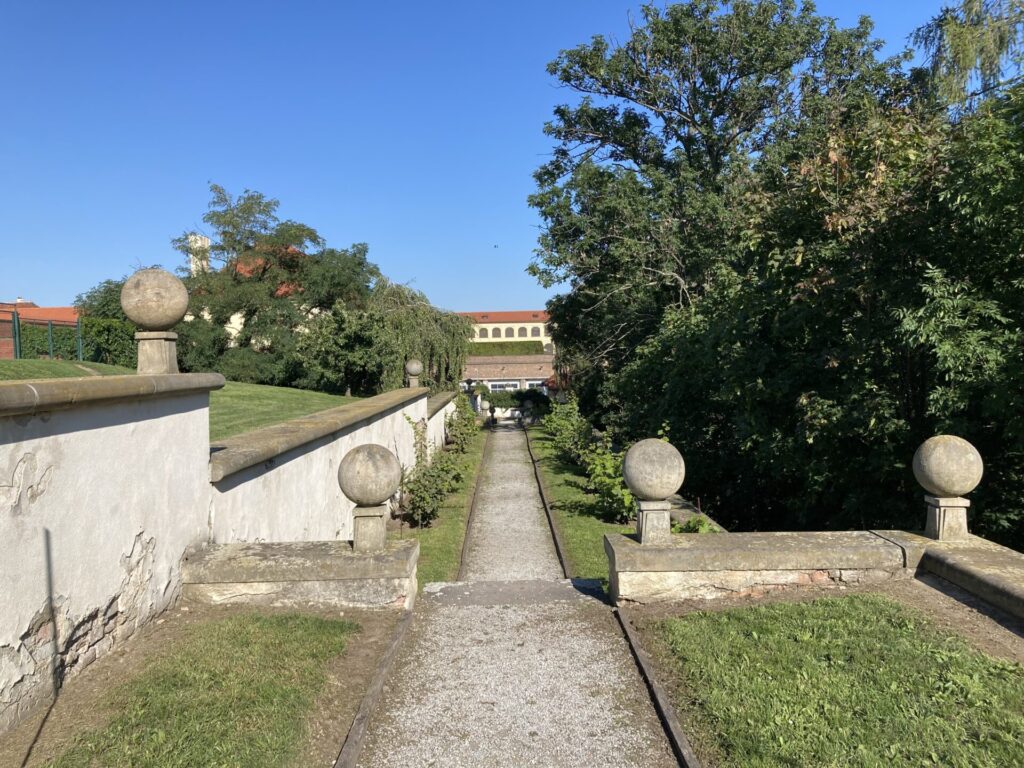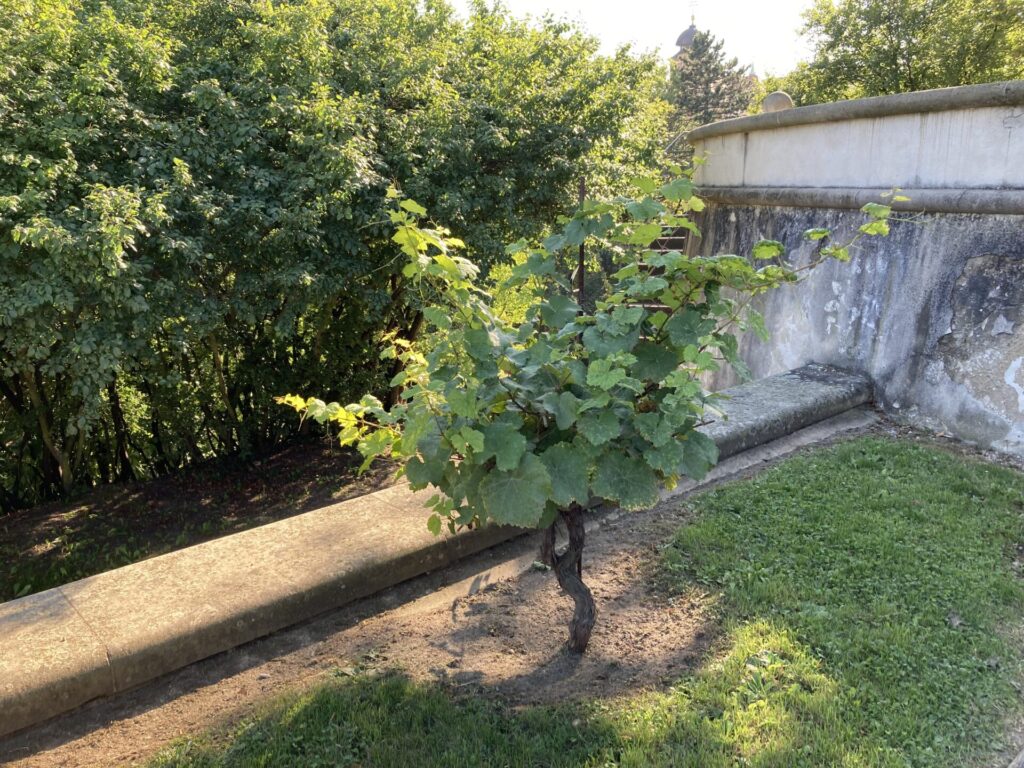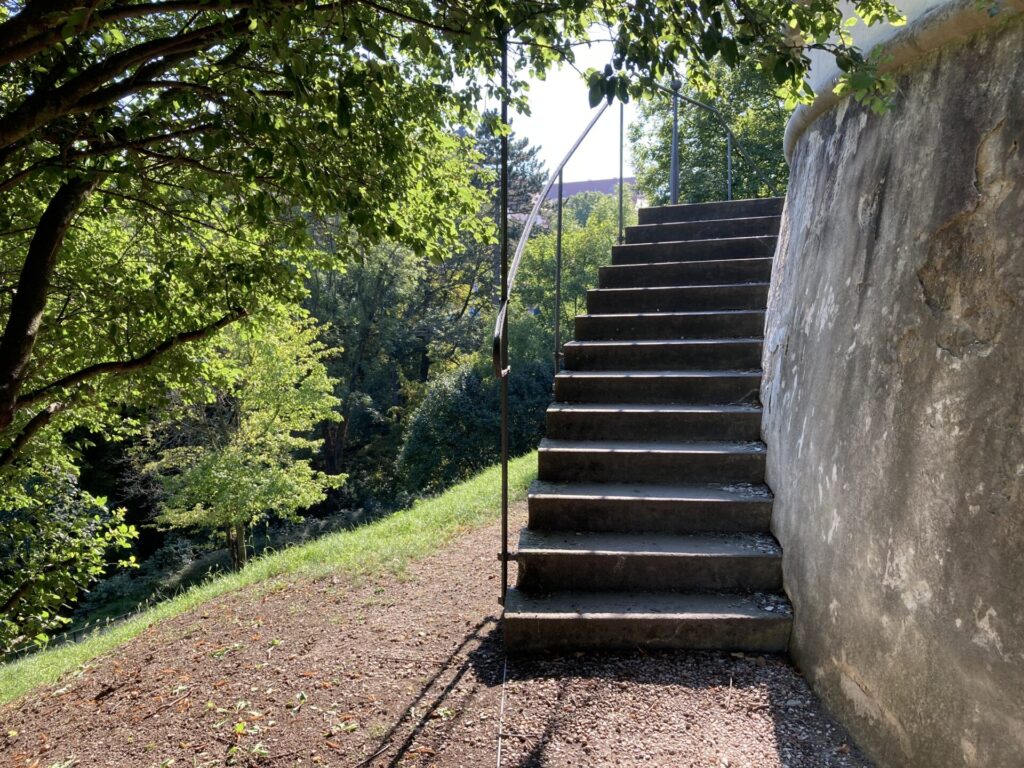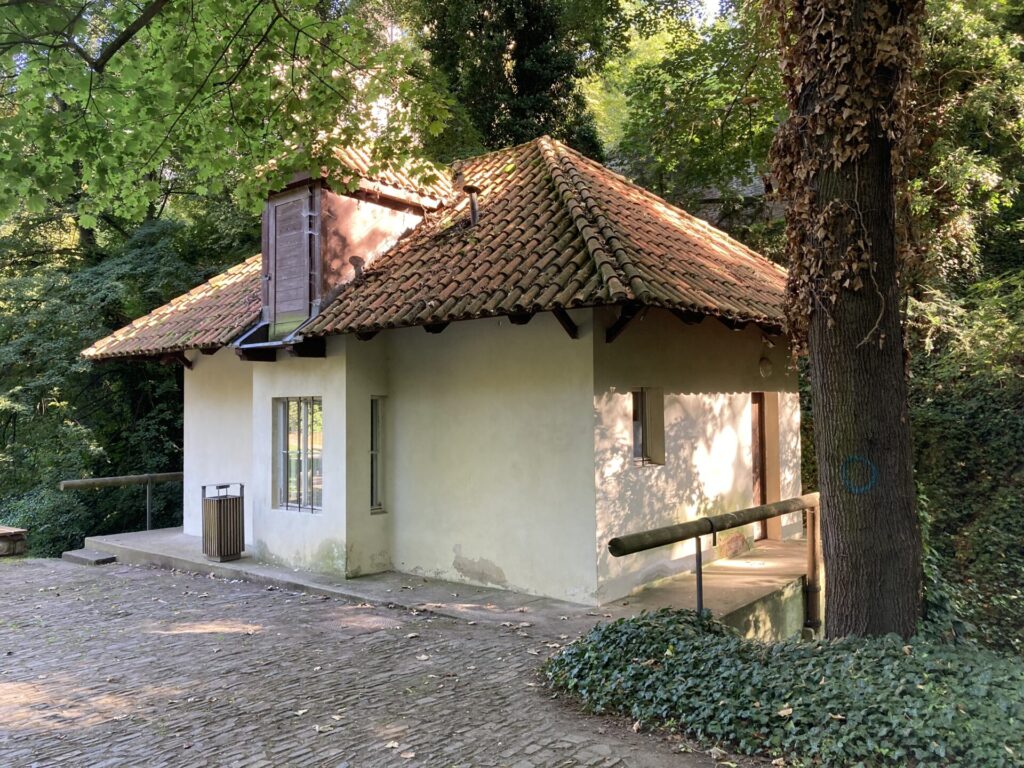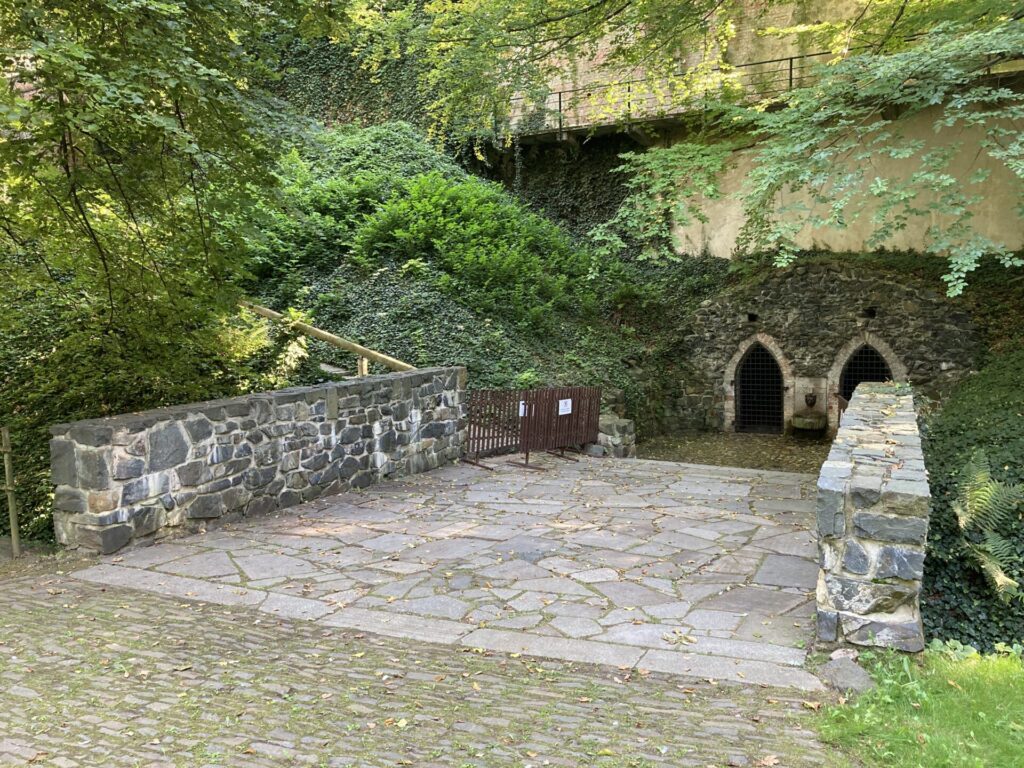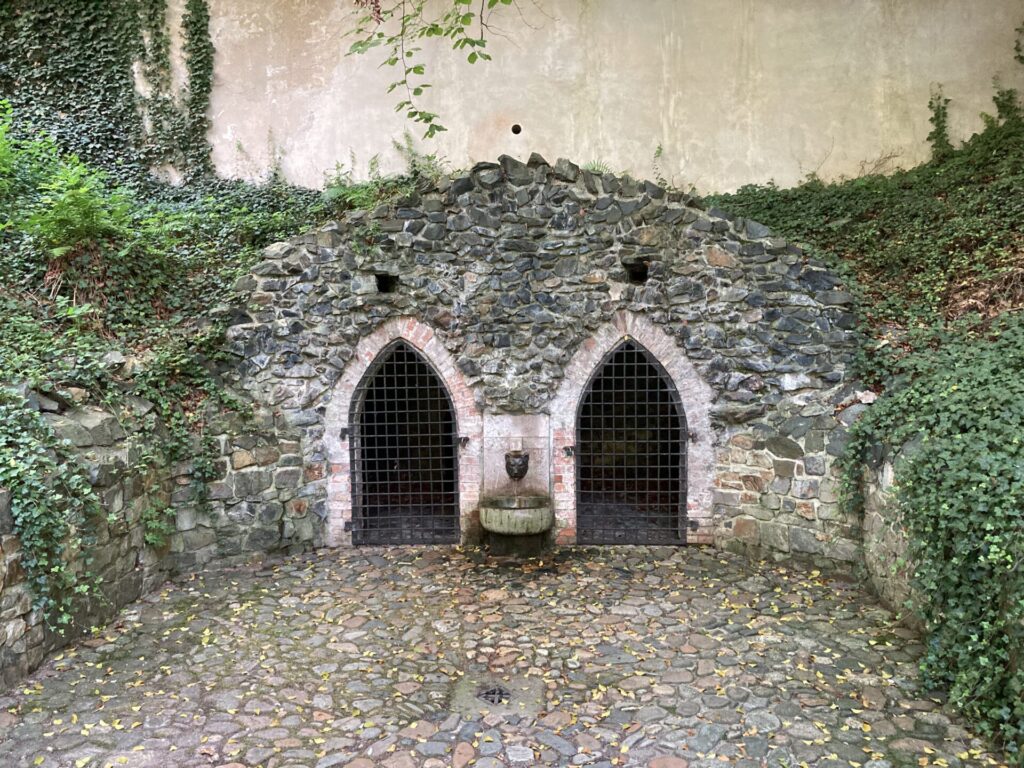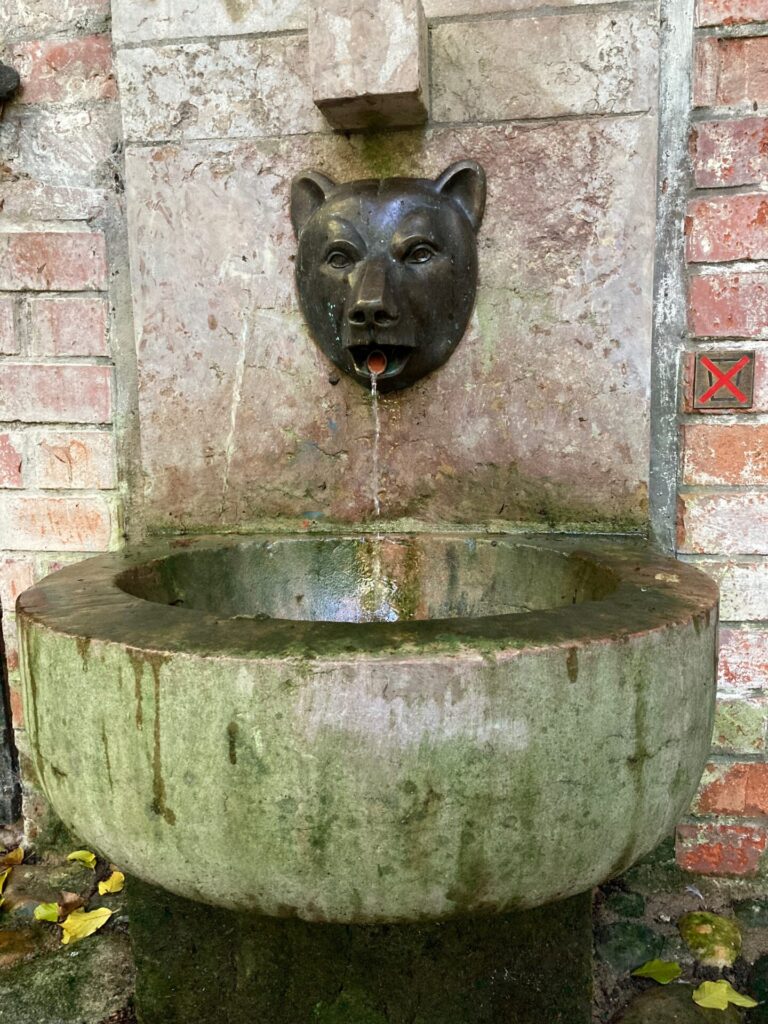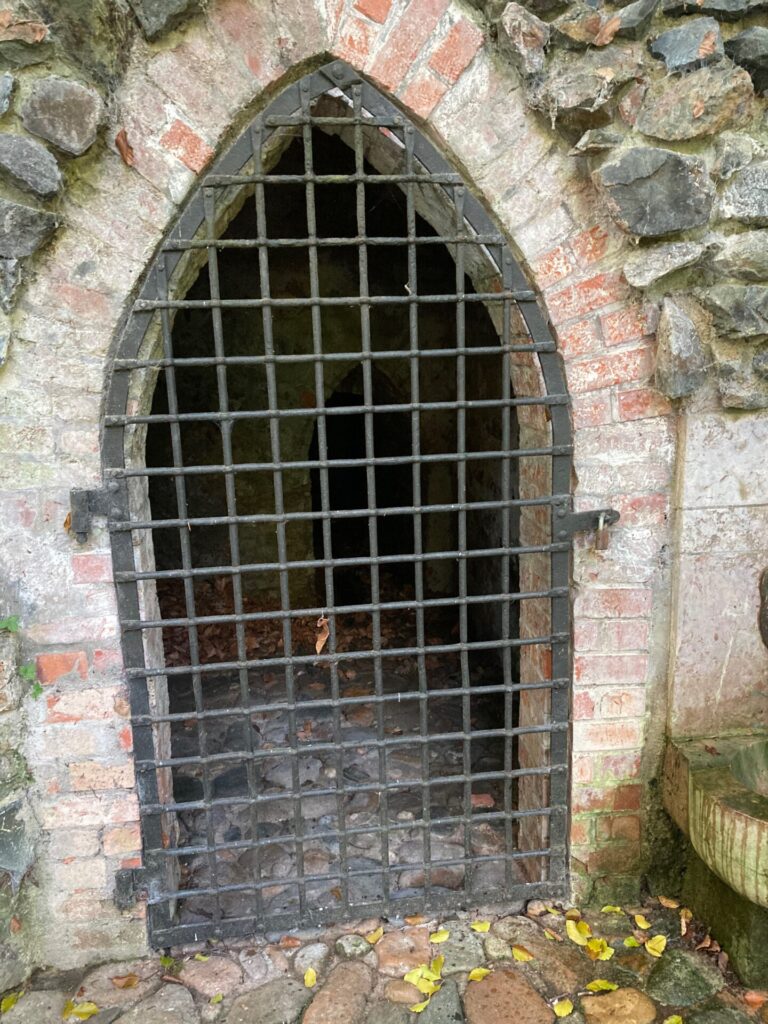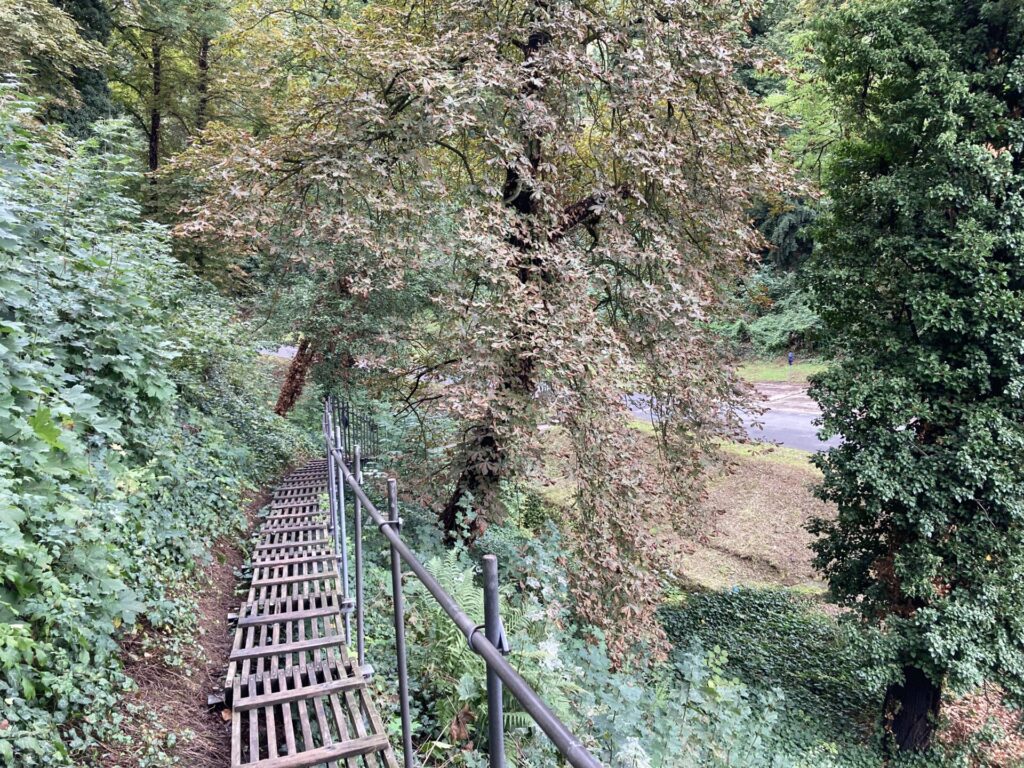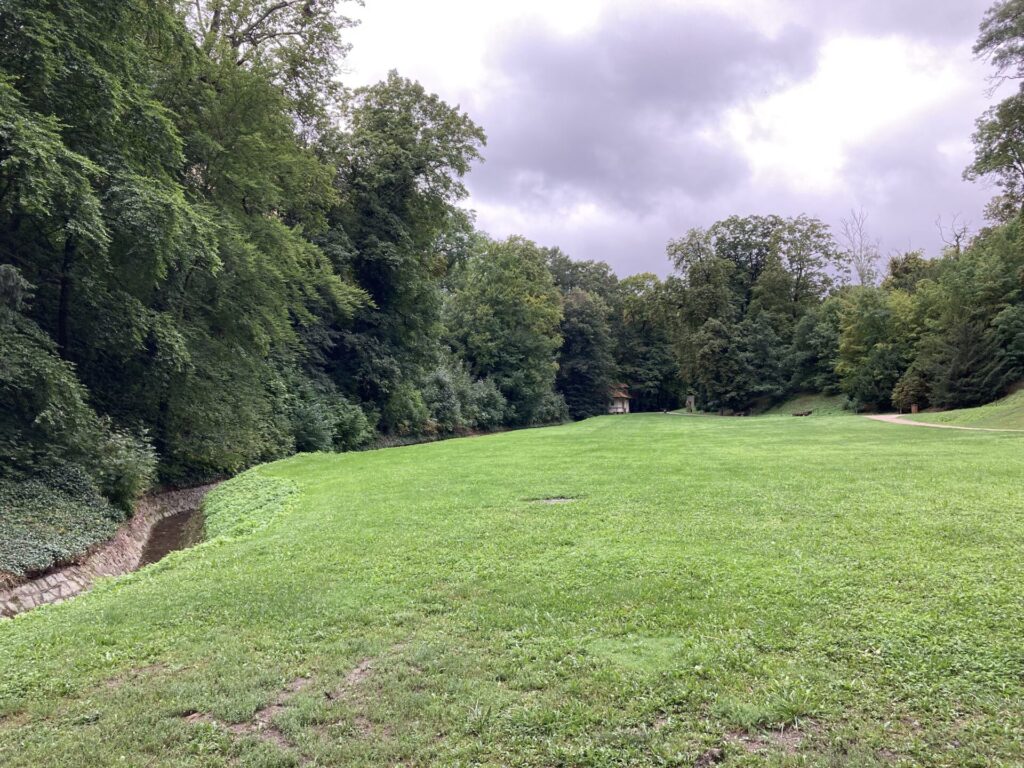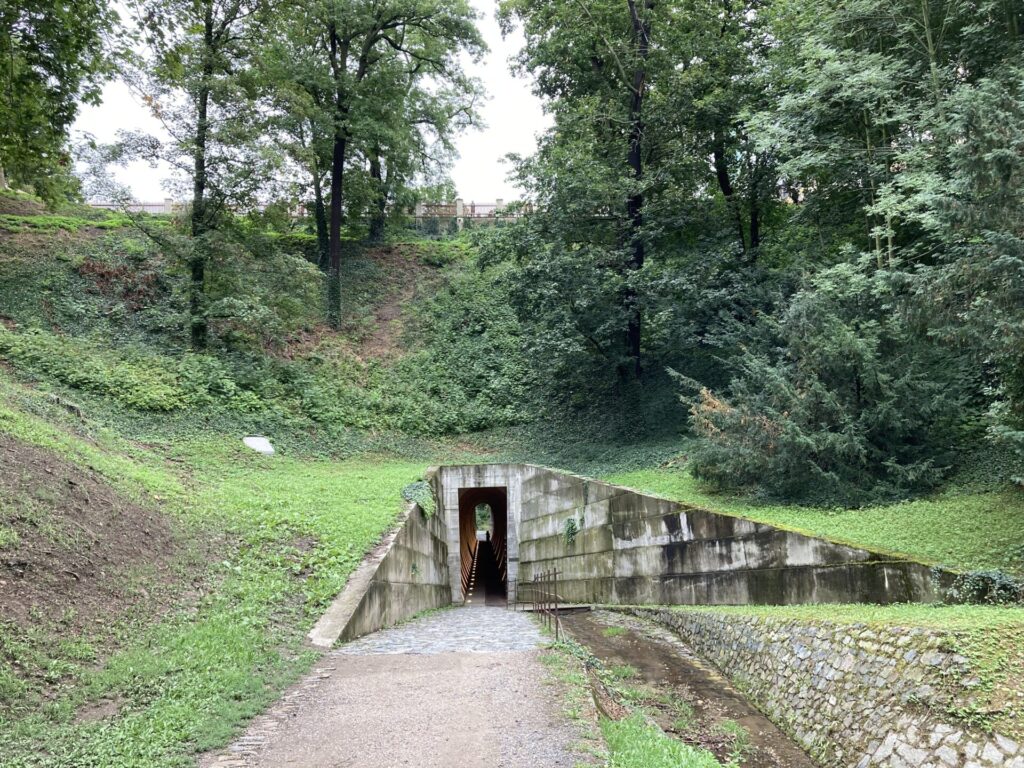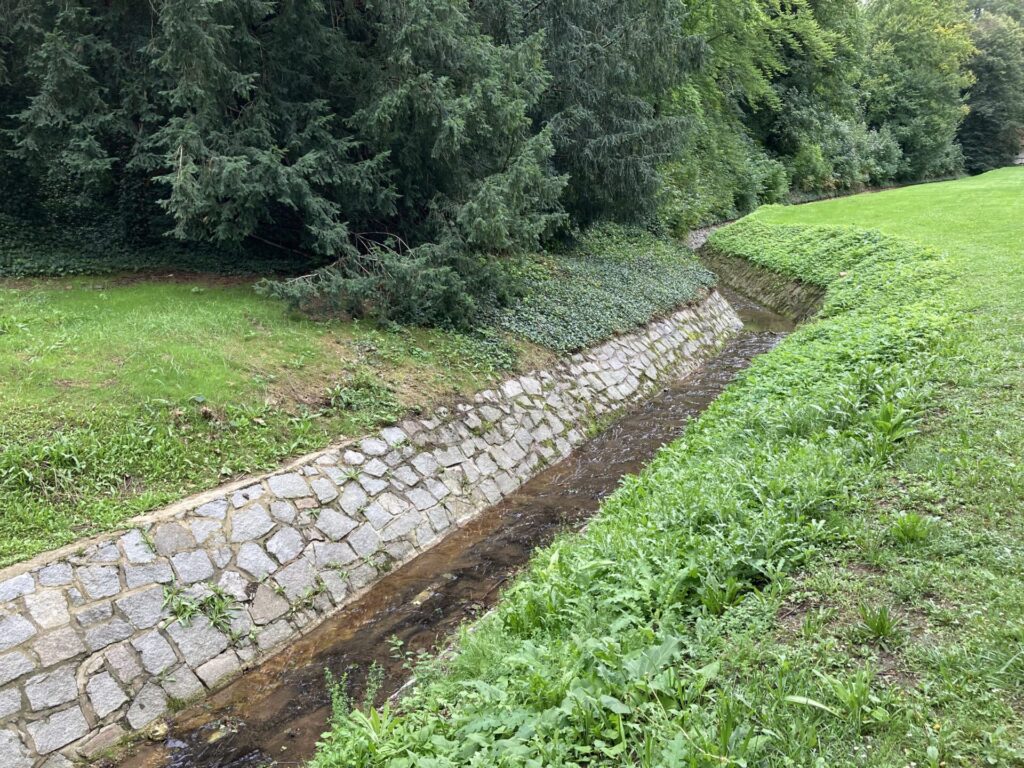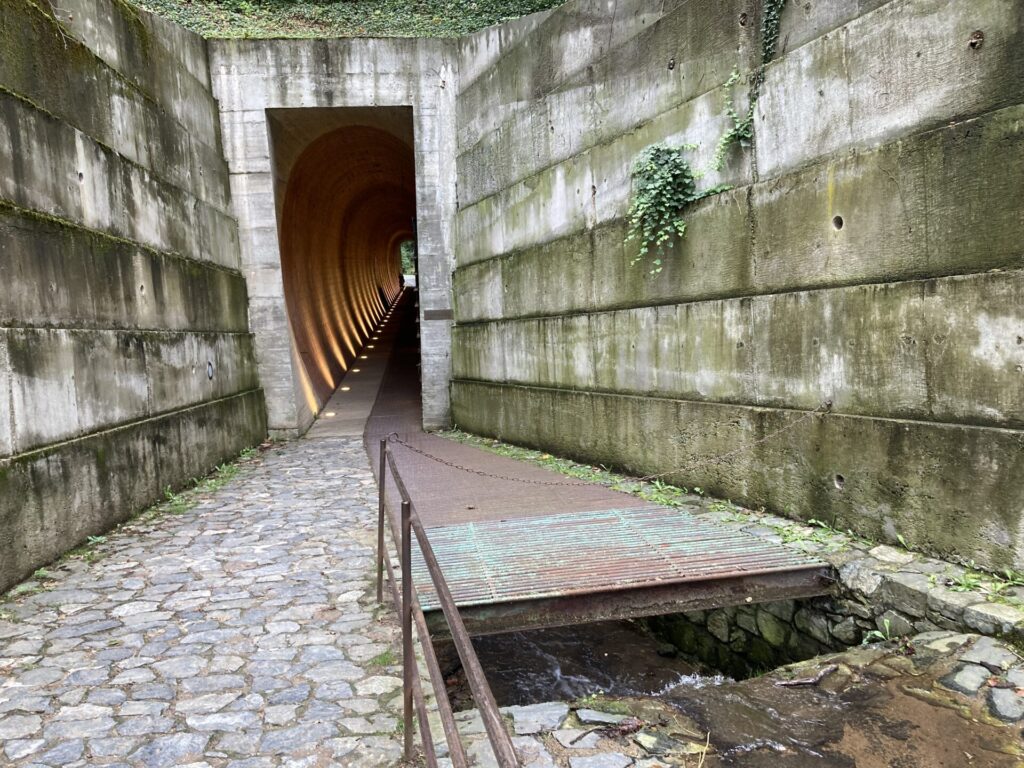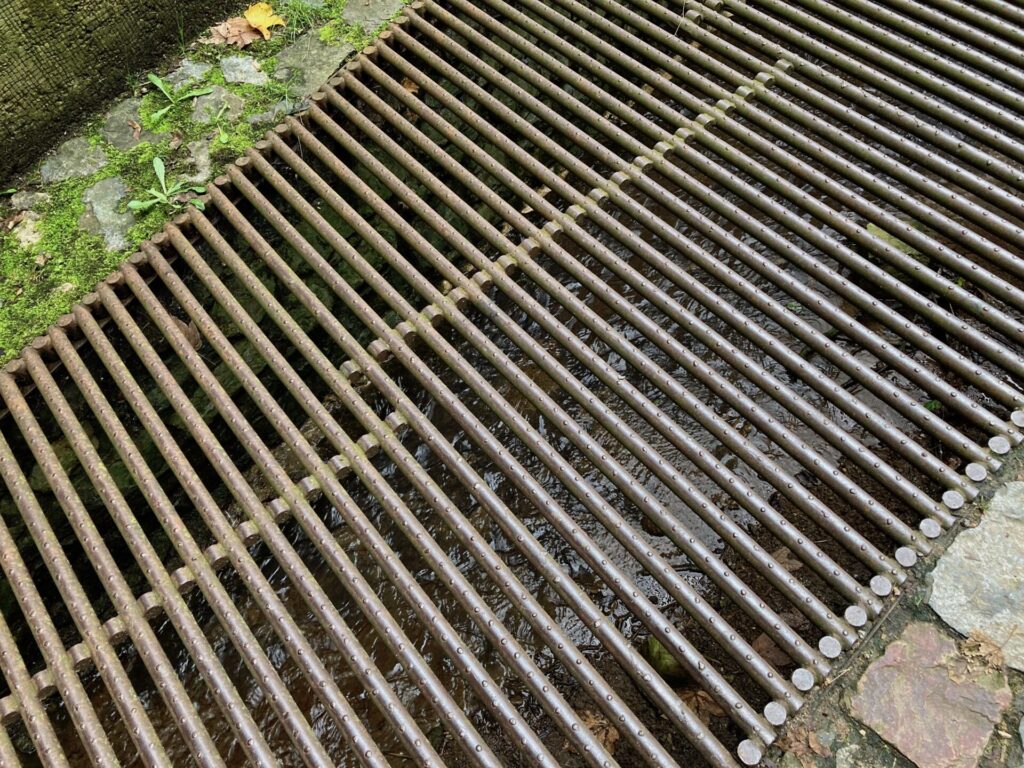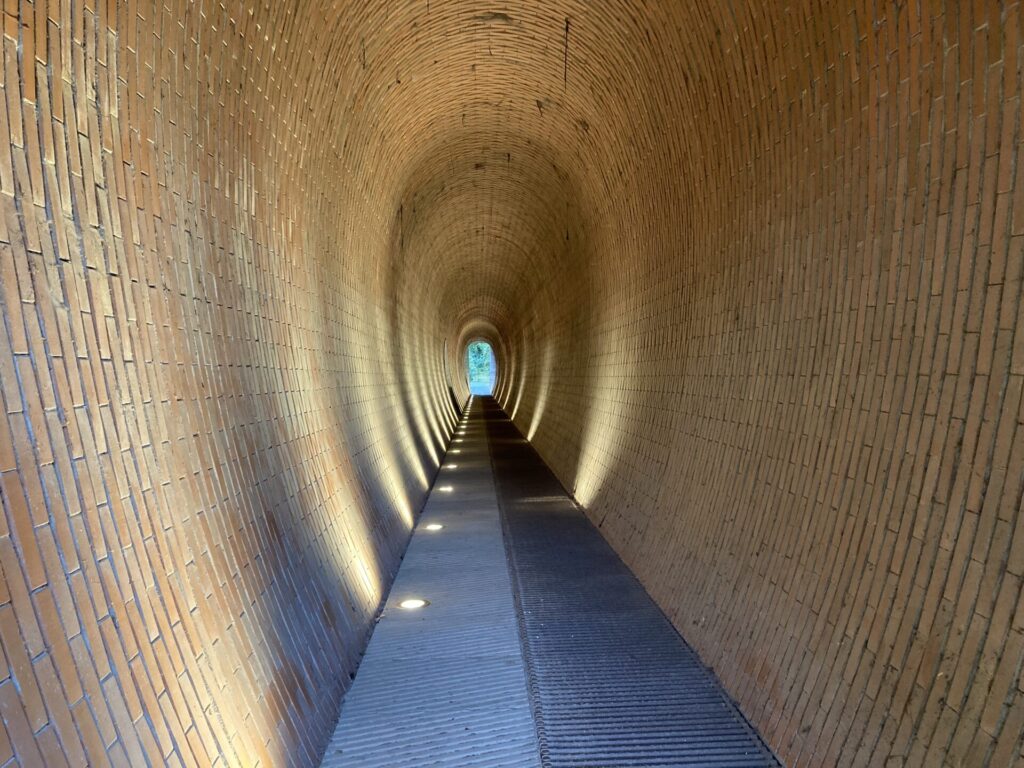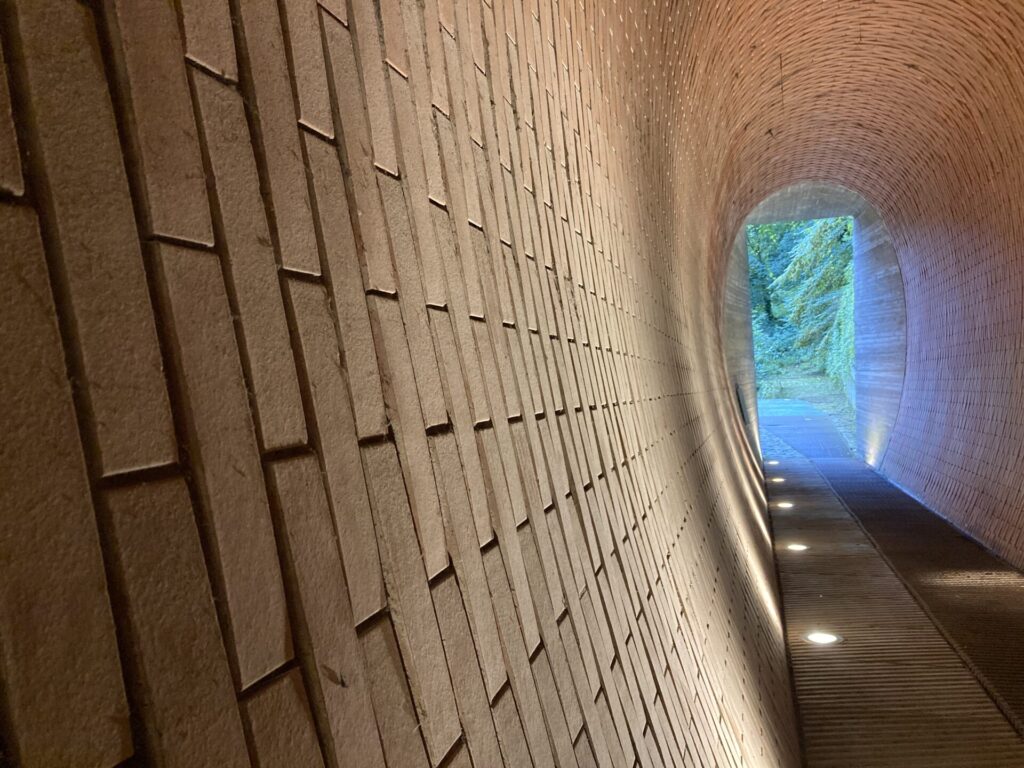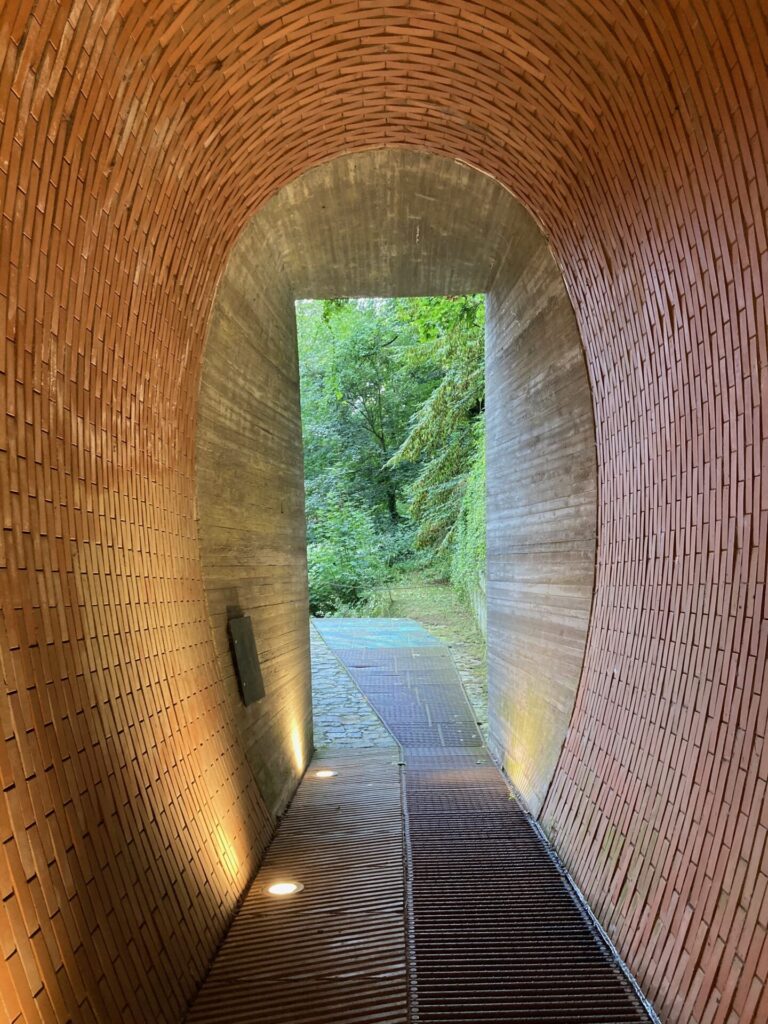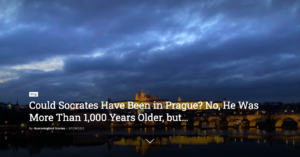President Václav Havel recalled his childhood: “As a little boy, I lived in the countryside for a time, and I clearly remember one experience I had at that time: I went to school on a dirt road…”
Architect Josef Pleskot also has a similarly strong childhood memory: “As a child, I liked the railway culverts, the egg-shaped tunnels under the railway embankment. On holidays, I used to swim in a pond and from the village to the pond you had to walk through one of these railway culverts. The memory from my childhood – this passage through the canal into another world – was so beautiful to me that I wanted a passage at the Castle to be egg-shaped.”
These experiences of two little boys (although their childhood years were separated by 16 years) gave rise to the beautiful “Josef Pleskot Tunnel” in the Stag Moat of the Prague Castle. For Josef Pleskot, it later also meant winning the Wienerberger Brick Award for the best brick building in all of Europe.
The Stag Moat is a natural gorge with an area of nearly 200 acres, which served as a defensive element of the Prague Castle in its history. Later, there were vineyards in some parts of the Stag Moat. Deer were bred in the moat during the reign of Emperor Rudolf II. – since then, it has been called the Stag Moat. Deer breeding ended here in 1742 when the French army and its soldiers occupied the Prague Castle and shot all 29 deer.
The Brusnice Stream flows through the Stag Moat (if you take street car number 22 up to the Castle, the names of the four stops from where you can reach the Castle are Královský letohrádek – Pražský Hrad – Brusnice – Pohořelec).
The stream has three main springs, and all of them are located in the area of the Břevnov Monastery. The main spring is called Vojtěška. Legend has it that Prince Boleslav II met here with Bishop Vojtěch. The people from the nearby village (today the Břevnov district) believed that the water from this stream had healing properties. That is why, in 993, they founded the first male Benedictine monastery in Bohemia here.
During the reign of Ferdinand I, the creator of the Royal Garden, the Powder Bridge was built over the moat, which connected the Castle with the garden. By the way – the Powder Bridge has its name from the fact that gunpowder was stored in the Mihulka Tower (also called the Powder Tower) until the 18th century.
The Powder Bridge was first wooden. When it burned down, a new stone bridge was built.
During the reign of Maria Theresa, the pillars were heavily fortified, which divided the moat into an upper part with an area of over 3 hectares and a lower part with a size of more than 5 hectares. Brusnice was directed into an underground sewer, and whoever wanted to go through the entire ditch had to climb up the embankment between its upper and lower parts and then go down again. Only the new Josef Pleskot Tunnel opened a direct route after 231 years.
The 84-meter-long tunnel passes through this rampart, where we even see one of the original pillars of the bridge at one point. The floor of the niche is covered with river pebbles, indicating the bottom of a stream.
In times of totalitarianism, the Stag Moat was inaccessible to the public, but that changed when Václav Havel became our President. The same was true of the entire castle – until Václav Havel was elected President, only about a third of the places open to the public today were available at that time. However, the castle grounds, full of police officers and members of the communist secret police (StB), gradually transformed into a friendly place full of social and cultural life.
However, Havel’s opening of the Castle could not just mean, “let’s take the keys and unlock the gates”. The Royal Garden was the first to be opened to the public, which was also closed because the house where the communist presidents had lived was there.
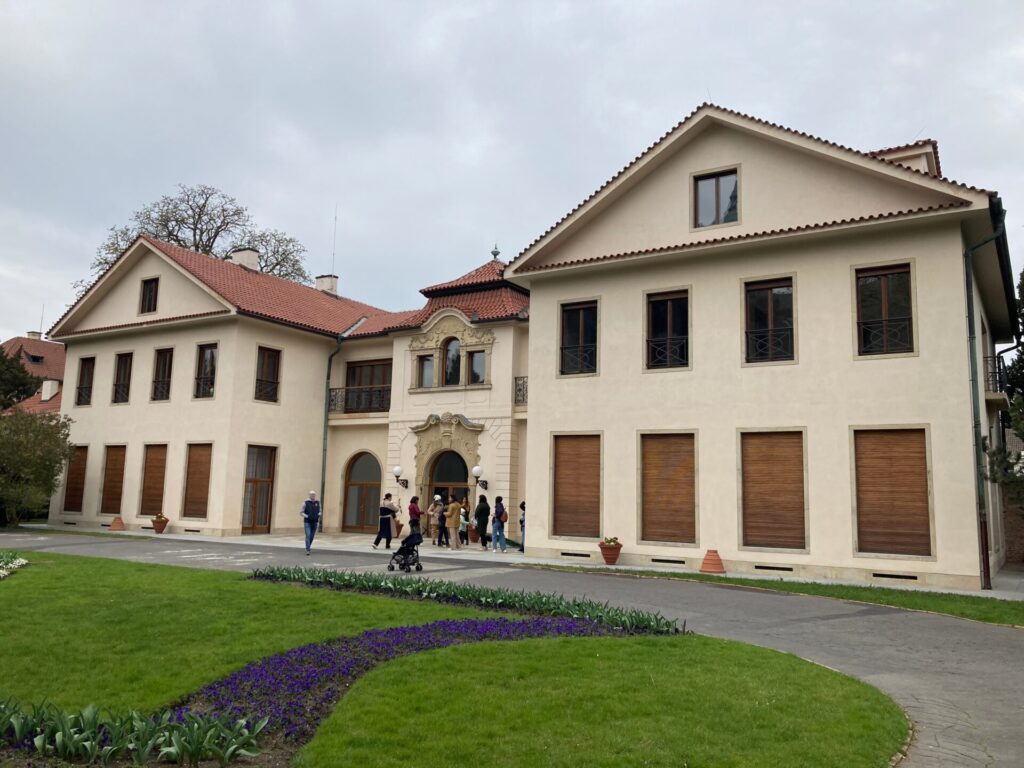
In contrast, Václav Havel decided to continue living in the house on the Rašín Embankment built by his grandfather Vácslav Havel.
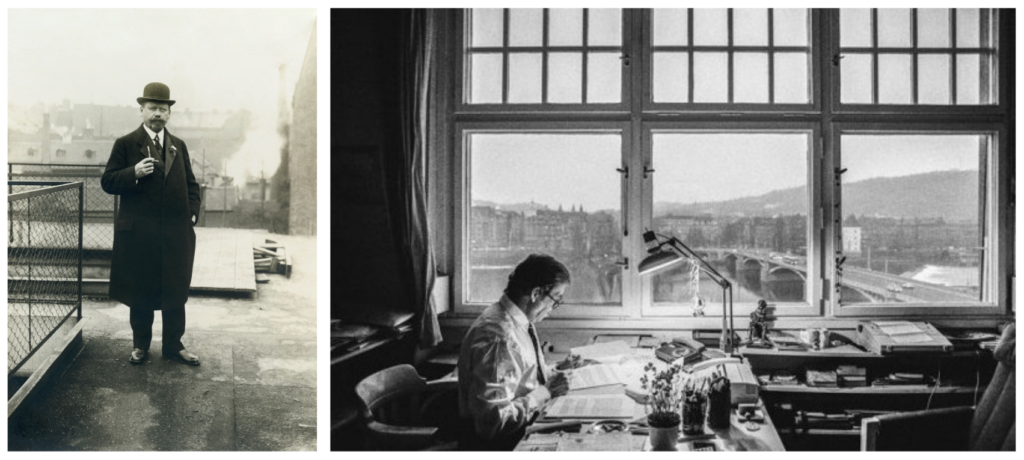
(A bomb accidentally hit the adjacent house in February 1945 after which there was an empty gap in its place until the 1990s, and only in the 1990s was the Dancing House built here.)
On the edge of the Royal Gardens towards the Stag Moat, a beautiful orangery was built. This building was designed by the Czech-British architect, Eva Jiřičná. The Orangery replaced the greenhouse in the Royal Garden, where it was a problem to maintain a stable temperature for subtropical plants. The project was initiated by Havel’s first wife, Olga Havlová, who unfortunately did not live to see its completion. (Canadian benefactor Jennifer Allen Simmons partially financed the construction of the Orangery in her honor.)
Another big task at that time was to make the Stag Moat accessible. After its opening, Václav Havel encouraged his Chancellor, Ivan Medek (born in 1925) to go and see it: “You are always just sitting here in your office; go and see the Stag Moat sometime. I bet you’ve never been there in your whole life.” His chancellor replied that he knew the Stag Moat very well: “They used to take me there in a pram in the twenties.”
In the twenties, another interesting place was created in the Stag Moat, Masaryk’s Lookout. Its author was the then Castle architect Jože Plečnik, who built it on the spot where President Tomáš Garrigue Masaryk liked to sit under a hundred-year-old linden tree. From the semi-circular viewpoint, a path led to the terraced vineyard, symbolically reminding us that vines grew there in the ancient past.
Of course, the lookout fell into disrepair and became dilapidated during the communist era. Masaryk’s bench has yet to survive, but two new benches stand under the very same linden tree Masaryk liked so much, which is by no coincidence the Czech national tree.
It used to be possible to get to the Masaryk Viewpoint along the path along the Prague Castle Riding Hall, but today, you can only get there from the Stag Moat. The way to it turns up a short distance behind the bear keeper’s house and the bear shelter (bears were brought to President Masaryk by Czech legionnaires from Siberia).
The connection of the Upper and Lower Stag Moat and the creation of an alternative access road leading from Klárov to the grounds of Prague Castle was so crucial to Václav Havel that he participated in the project as an investor with the VIZE 97 foundation, which he founded with his second wife, Dagmar Havlová.
Architect Pleskot first solved the difficult access from Klárov by designing a system of footbridges that lead visitors from Klárov along the stone walls of Opyš along the Chotkova road to the Lower Stag Moat.
The project’s second stage was the construction of a passage, which copies the former Theresian Adit (aka. Maria Teresa Tunnel), which directed water from Brusnice under the rampart of the Powder Bridge. And thanks to the boyish perception of the architect Pleskot, the passage is egg-shaped…
Josef Pleskot stopped coming to the Castle after President Havel’s mandate ended. He is convinced that the Castle must be open and welcoming to people, while especially in the last ten years, the Castle has been closed again, both mentally and factually. The Stag Moat was closed with some exceptions, and there were barricades and lengthy searches at all entrances to the Castle. The castle courtyards were also closed during the time of COVID, despite them being free spaces, the same as any other square or street.
With President Petr Pavel, the Castle quickly changed its friendliness to people. Petr Pavel already said at the first press conference after announcing the presidential election results: “One of the first steps will lead to the physical and informational opening of the Castle. I want more events that bring the public to the Castle, not only in the field of culture but also in science or some current problems that need to be solved. As for architecture, T.G. Masaryk had his own Plečnik, and I will be pleased if the architect Pleskot cooperates with me.”
Architect Pleskot responded: “Mr. President kicked me the ball; I caught it and he has my attention. I have a lot of respect for the President, and I will consider his challenge thoroughly. If I can, I’ll be happy to work alongside him.”













